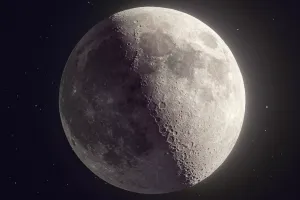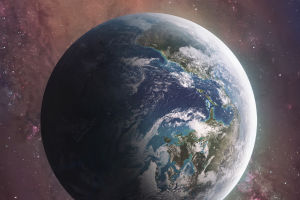A new US study traces the cause of the first known mass extinction of animals at the end of the Ediacaran period about 550 million years ago to a reduction in global oxygen supply.
The study was recently published in the Proceedings of the National Academy of Sciences.
Around 80 percent of animals died out during this time, with animals that depend on large amounts of oxygen appearing to have been hit particularly hard, according to research led by Scott Evans, a postdoctoral researcher in Virginia Tech's Department of Earth Sciences.
This suggests that the extinction event was environmentally controlled, as are all other mass extinction events in the geological record.
Environmental changes, such as global warming and deoxygenation events, could lead to mass extinctions of animals and severe disruption and reorganization of ecosystems, the researchers said.
This has been proven time and again in the study of Earth's history. Thus, this study provides insight into the long-term impact of current environmental changes on the biosphere.
What exactly is causing the global oxygen decline? Researchers think it could be any combination of volcanic eruptions, plate tectonics, asteroid strikes, and more. But what the research has seen is that the extinct animals appear to be responding to a reduction in the global supply of oxygen.
In another study, Virginia Tech scientists found that a lack of oxygen is affecting the world's freshwater. The reason is that excess pollutant runoff from climate change and land use warms waters. Warmer water reduces the ability of freshwater to hold oxygen, which is eaten by freshwater microbes that decompose nutrients in runoff.
"Our research shows that, like all other mass extinctions in Earth's past, the first mass extinction was caused by major climate change," Evans said. "This is just one in a long line of cautionary tales that prove the dangers to animal life from our current climate crisis."
The research team pointed out that mass extinctions are recognized as important steps in the evolutionary trajectory of life on Earth. Whatever the immediate cause of the mass extinction, the result was multiple major changes in environmental conditions.
The earth has a history of 4.6 billion years and has experienced five mass extinctions.
The first mass extinction occurred at the end of the Ordovician period 440 million years ago, also known as the Ordovician mass extinction.
The extinction event resulted in the extinction of about 85% of species. It is understandable that marine life flourishes at this time. You must know that water is the source of life. The earliest life on earth was born in the ocean, and land organisms also evolved from marine organisms.
The second mass extinction occurred in the late Devonian period 365 million years ago, also known as the Devonian mass extinction.
During this period, the land area began to expand continuously, and a large number of terrestrial organisms began to evolve and develop. In particular, vertebrates ushered in a period of rapid development, and reptiles also began to appear. This extinction event caused the extinction of 70% of the species on the earth.
The third mass extinction occurred at the end of the Permian period 250 million years ago, also known as the Permian mass extinction.
This is the most serious mass extinction event in history. If you want to ask the five mass extinction events, which one is the most serious, it must be the third one.
According to statistics, this extinction event caused the number of biological families to decrease by 52%, and the number of species decreased by more than 90%. The greatest impact was on marine life, with 96% of marine species becoming extinct, resulting in the reduction and disappearance of major organisms that had occupied the ocean for nearly 300 million years, including trilobites.
The fourth mass extinction occurred in the late Triassic period 208 million years ago, also known as the Triassic mass extinction.
This time, the scale of extinction was relatively small. Only 25% of species were endangered, mainly marine life. And this small extinction also created many favorable conditions for the domination of dinosaurs.
Since then, dinosaurs have begun their long journey to rule the earth. Scientists believe that this mass extinction may be related to the impact of asteroids on the earth and super volcanic eruptions.
Everyone is familiar with the fifth mass extinction. It was the Cretaceous mass extinction that occurred 65 million years ago. This mass extinction event caused the overall destruction of the dinosaur family, and about 80% of the species on the earth became extinct.


